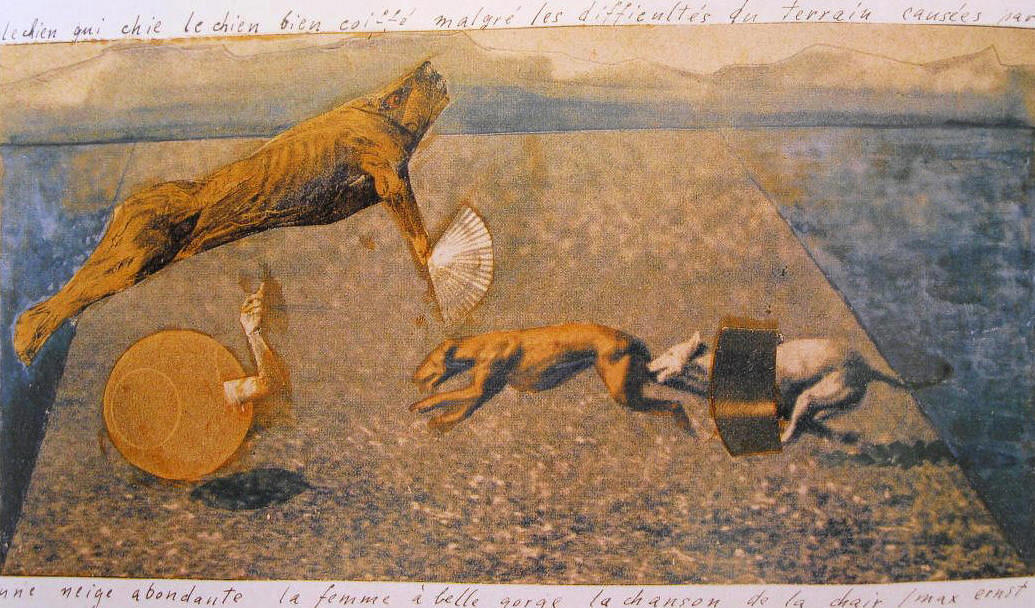"The Man of these Infinite Possibilities": Max Ernst’s Cinematic Collages
DOI:
https://doi.org/10.5195/contemp.2011.27Keywords:
Max Ernst, Georges Méliès, Collage, Cinema, Film, Outmoded, Obsolesence, Surrealism, Dadaism, Dada, ModernismAbstract
On more than one occasion in his critical writings of the 1920’s, surrealist leader André Breton compared Max Ernst’s collages to cinema. In his first essay on the artist in 1921, Breton aligned Ernst’s collages with cinematic special effects such as slow and accelerated motion, and spoke of the illusionistic ‘transformation from within’ that characterized Ernst’s constructed scenes. For Breton, Ernst’s collages employing found commercial, scientific and journalistic images approximated the naturalistic movement of film, and thereby contributed to the radical obsolescence of traditional two-dimensional media such as painting and drawing, which remained frozen in stillness. Thus, Ernst’s images were provocative witnesses to the way in which modern technology fundamentally altered the perspectivally-ordered picture plane. But at the same time that Ernst’s collages rendered painting obsolete, they likewise depended upon fragments of outmoded popular culture themselves. For Breton, Ernst was a magician, “the man of these infinite possibilities,” comparable to cinematic prestidigators like turn-of-the-century filmmaker Georges Méliès. By drawing on the influence of recently outmoded popular culture such as early trick films, Ernst provides a crucial early example of the post-war fixation on counter-temporalities and anti-production. At once technologically advanced and culturally archeological, Ernst’s collages cannily defy strict categorization as “Modernist.”

Downloads
Published
How to Cite
Issue
Section
License
Authors who publish with this journal agree to the following terms:
- The Author retains copyright in the Work, where the term “Work” shall include all digital objects that may result in subsequent electronic publication or distribution.
- Upon acceptance of the Work, the author shall grant to the Publisher the right of first publication of the Work.
- The Author shall grant to the Publisher and its agents the nonexclusive perpetual right and license to publish, archive, and make accessible the Work in whole or in part in all forms of media now or hereafter known under a Creative Commons Attribution 4.0 International License or its equivalent, which, for the avoidance of doubt, allows others to copy, distribute, and transmit the Work under the following conditions:
- Attribution—other users must attribute the Work in the manner specified by the author as indicated on the journal Web site;
- The Author is able to enter into separate, additional contractual arrangements for the nonexclusive distribution of the journal's published version of the Work (e.g., post it to an institutional repository or publish it in a book), as long as there is provided in the document an acknowledgement of its initial publication in this journal.
- Authors are permitted and encouraged to post online a prepublication manuscript (but not the Publisher’s final formatted PDF version of the Work) in institutional repositories or on their Websites prior to and during the submission process, as it can lead to productive exchanges, as well as earlier and greater citation of published work. Any such posting made before acceptance and publication of the Work shall be updated upon publication to include a reference to the Publisher-assigned DOI (Digital Object Identifier) and a link to the online abstract for the final published Work in the Journal.
- Upon Publisher’s request, the Author agrees to furnish promptly to Publisher, at the Author’s own expense, written evidence of the permissions, licenses, and consents for use of third-party material included within the Work, except as determined by Publisher to be covered by the principles of Fair Use.
- The Author represents and warrants that:
- the Work is the Author’s original work;
- the Author has not transferred, and will not transfer, exclusive rights in the Work to any third party;
- the Work is not pending review or under consideration by another publisher;
- the Work has not previously been published;
- the Work contains no misrepresentation or infringement of the Work or property of other authors or third parties; and
- the Work contains no libel, invasion of privacy, or other unlawful matter.
- The Author agrees to indemnify and hold Publisher harmless from Author’s breach of the representations and warranties contained in Paragraph 6 above, as well as any claim or proceeding relating to Publisher’s use and publication of any content contained in the Work, including third-party content.
Revised 7/16/2018. Revision Description: Removed outdated link.


